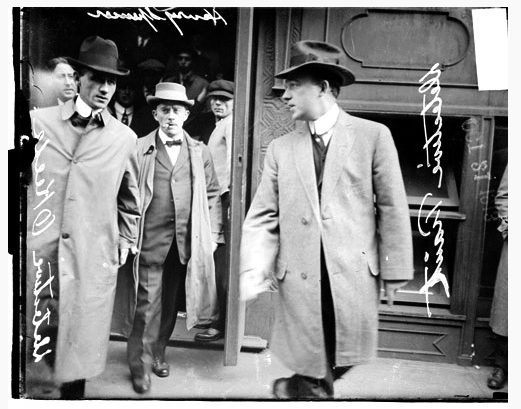Poet, Author
Born January 30, 1929, Essen, Nordrhein-Westfalen, Germany
Died February 25, 1990, Los Angeles, California
Edith Ogutsch's Poem in Weird Tales
"Reflections of an Egyptian Princess While Being Interred" (Jan. 1954)
Further Reading
http://www.lasfsinc.info/index.php?option=com_content&task=view&id=287&Itemid=514
Text and captions copyright 2016 Terence E. Hanley
Born January 30, 1929, Essen, Nordrhein-Westfalen, Germany
Died February 25, 1990, Los Angeles, California
Edith Ogutsch was born in Essen, Germany, on January 30, 1929. Her father, Wilhelm Ogutsch (1893-1944), was a cantor and a teacher of religion. Despite having served his country during World War I, he was Jewish, and so, under the Nazis, considered undesirable or an enemy of the State. On July 20, 1942, he and his wife were deported to Theresienstadt, a concentration camp in what is now the Czech Republic. At Theresienstadt, he taught and held religious services at a children’s home until his death from malnutrition and illness in 1944. His wife and Edith's mother, Erna Katz Ogutsch (1893-1971), survived the war and in 1947 immigrated to the United States. She died in New York in December 1971.
When she was ten years old, Edith Ogutsch was sent by her parents by Kindertransport to London. Eventually she was adopted by a British family named Acker in Manchester. Edith helped her adoptive family by working in their several hotels. In July 1947, she immigrated to the United States, where she was reunited with her mother and her aunt, Emmy Katz (1896-1977). Edith became a naturalized citizen in 1953.
Edith Ogutsch's poems were published in Ensign, Fiddlehead, Good Housekeeping, Negro Digest, the Los Angeles Times, The New Yorker, Reader’s Digest, Riverside Quarterly, The Saturday Evening Post, Wormwood Review, and other publications. She was active in science fiction fandom and contributed to several science fiction and fantasy magazines. Following is a list of her genre poems from the Internet Speculative Fiction Database (except for the first item):
- A poem in Challenge #4 (Spring 1951)
- "Reflections of an Egyptian Princess While Being Interred" in Weird Tales (Jan. 1954; reprinted in The Diversifier #20, May 1977)
- "Musings of an Insomniac" in Fire and Sleet and Candlelight (Arkham House, 1961)
- "Premonition" in Fire and Sleet and Candlelight (Arkham House, 1961)
- "A Recluse Answers" in Omniumgathum: An Anthology of Verse by Top Authors in the Field of Fantasy (Stygian Isle Press, 1976)
- "Immortality" in Omniumgathum (1976)
- "Listen! The Grass is Dying" in Omniumgathum (1976)
- "Nightmare Number Ten" in Omniumgathum (1976)
- "Me" in Fantasy Crosswinds #2 (Jan. 1977)
- "The Parade" in Fantasy Crosswinds #2 (Jan. 1977)
- "Lethal Lure" in Escape #1 (Fall 1977)
- "The Vampire" in Escape #1 (Fall 1977)
- "A Wish Come True" in The Diversifier #23 (Nov. 1977)
- "To a Meteor in a Planetarium" in Fantasy Crossroads #13 (June 1978)
- "Midnight Wine" in The Anthology of Speculative Poetry #4 (1980)
In addition, Edith co-authored a short story, "The Ideas," with Ross Rocklynne, published in Witchcraft & Sorcery #5 (Jan./Feb. 1971). And she wrote two published essays on Hannes Bok, "A Memorial for Hannes Bok" in and flight of angels: The Life and Legend of Hannes Bok (1968), and "The Rambunctious Bok" in Escape #1 (Fall 1977), the latter with Bok.
Like Bok before her, Edith Ogutsch was found dead in her home, in her case, in Los Angeles on February 25, 1990. She was buried at Home of Peace Cemetery in San Diego.
Here is a science fiction limerick by Edith Ogutsch:
The alkaloid natives of Pollux
Engage in the strangest of frollux--
They each get their kicks
Chewing alkali sticks
Which makes them, of course, alkihollux.
Here is a science fiction limerick by Edith Ogutsch:
The alkaloid natives of Pollux
Engage in the strangest of frollux--
They each get their kicks
Chewing alkali sticks
Which makes them, of course, alkihollux.
"Reflections of an Egyptian Princess While Being Interred" (Jan. 1954)
Further Reading
Guide to the Papers of the Ogutsch and Katz Family, 1893-1988, at the Leo Baeck Institute Center for Jewish History, New York, New York.
You can see photographs of Edith Ogutsch and others at Fun-Con 1, from July 1968, at the following URL:
 |
| Edith Ogutsch's first published genre work may have been in this publication, Challenge: The Poetry of the Atomic Age #1.4 (Spring 1951). Lilith Lorraine was editor. Also represented in its pages were Clark Ashton Smith, Stanton A. Coblentz, Evelyn Thorne, Vera L. Eckert, Orma McMormick, Isabelle E. Dinwiddie, Emili A. Thompson, Michael Wolf, Clive Jackson, Alan Donovan, Dariell Dunay, and others. |
Text and captions copyright 2016 Terence E. Hanley

































